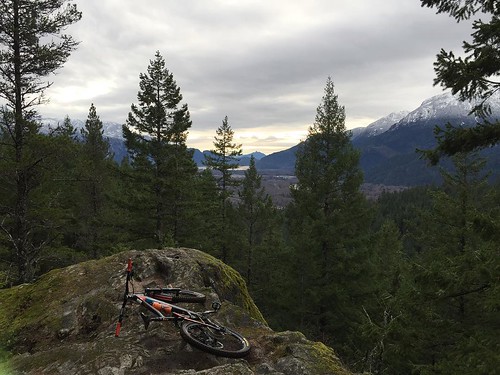Ations and experiments, so the model should fit average properties of those patterns in lieu of patterns themselves. Not all parameters within the simulation is often determined uniquely, because the decision of spatial and temporal scales inside the simulations depends upon the degree of preferred precision or coarsegraining that may be freely adjusted. Our simulations possess a continuous length, whereas the circumference from the colonies increases with time, so the procedure of comparing the patterns has to take these variations in the geometry into account. We now briefly outline the parameter fitting procedure (also see Table ); for the total description, see Approaches: Modeling Information within the Supporting Material. The spatial patterns that outcome from genetic drift and competition have been previously investigated in Korolev et al., exactly where the authors showed the population dymics without having conjugation that we study here is usually described when it comes to the following three quantities: TABLE Parameter Migration (Ds) Genetic drift (Dg) Expense of your conjugative plasmid (s) Spatial and temporal scales Parameterization sources Experimental data Wandering of sector boundaries Quantity of surviving sectors Bending of sector boundaries Measured distance and time Simulation data Global heterozygosity (probability that two cells in the colony are the same sort) Local heterozygosity (probability that two cells from a deme would be the exact same kind) Bending of sector boundaries Deme quantity and sizeConnecting experiments with simulationsThe experiments have definite physical measures of time and space, but these are arbitrarily scaled in simulations. For computatiol efficiency, we utilised this freedom in picking spatial and temporal scales to pick MedChemExpress GSK137647A specific values of m and N (N, PubMed ID:http://jpet.aspetjournals.org/content/184/1/56 mN ) and then determined the corresponding spatial and temporal scales by matching experimental and simulation information. As we show in Data: Simulation Facts inside the Supporting Material, this choice doesn’t have an effect on our estimate of the conjugation price, which we further verified by repeating model parameterization for diverse values of m and N (N, mN and N, mN ). To match experimental and simulation data, we defined 4 buy Sodium laureth sulfate dimensionless quantities (invariants, Inv) derived from the six experimental parameters Dg, Ds, vt, h f ti (typical fraction of transconjugants), Texp (total time), and Lexp (population front length):Inv Inv Ds ; T Dg exp Ds; Dg  Lexp vt Texp; Lexp Inv Description of model parameters and their alogs in experimental and simulation data. Parameters were combined to calculate dimensionless invariants, as described in the Materials and Procedures, to match experimental and simulation information. Biophysical Jourl Freese et al.Inv hf t i:To establish a match, the values of those experimental invariants and their simulation counterparts have to be equal. In unique, the very first two invariants had been applied to locate the amount of simulation generations and demes (Tsim and Lsim, respectively). The third invariant was employed to estimate the fitness expense of your plasmid, plus the fourth invariant to estimate the conjugation price.Results Visualizing conjugation in the course of colony expansion To visualize conjugation, we began experiments with Fdonor cells expressing eCFP (enhanced cyan fluorescent protein) and Frecipient cells expressing eYFP (enhanced yellow fluorescent protein). The two strains were grown to saturation overnight, mixed for the preferred proportion (usually : F F by optical density, inoculated onto agar plates in dro.Ations and experiments, so the model should match typical properties of these patterns as opposed to patterns themselves. Not all parameters inside the simulation is usually determined uniquely, since the option of spatial and temporal scales in the simulations depends upon the level of desired precision or coarsegraining that can be freely adjusted. Our simulations have a continuous length, whereas the circumference with the colonies increases with time, so the process of comparing the patterns has to take these differences within the geometry into account. We now briefly outline the parameter fitting procedure (also see Table ); for the total description, see Techniques: Modeling Information in the Supporting Material. The spatial patterns that outcome from genetic drift and competitors happen to be previously investigated in Korolev et al., where the authors showed the population dymics with no conjugation that we study here may be described when it comes to the following 3 quantities: TABLE Parameter Migration (Ds) Genetic drift (Dg) Price in the conjugative plasmid (s) Spatial and temporal scales Parameterization sources Experimental data Wandering of sector boundaries Number of surviving sectors Bending of sector boundaries Measured distance and time Simulation information Worldwide heterozygosity (probability that two cells from the colony would be the similar sort) Local heterozygosity (probability that two cells from a deme would be the very same kind) Bending of sector boundaries Deme number and sizeConnecting experiments with simulationsThe experiments have definite physical measures of time and space, but these are arbitrarily scaled in simulations. For computatiol efficiency, we utilised this freedom in deciding on spatial and temporal scales to pick particular values of m and N (N, PubMed ID:http://jpet.aspetjournals.org/content/184/1/56 mN ) then determined the corresponding spatial and temporal scales by matching experimental and simulation information. As we show in Information: Simulation Details within the Supporting Material, this option will not influence our estimate of the conjugation price, which we further verified by repeating model parameterization for unique values of m and N (N, mN and N, mN ). To match experimental and simulation data, we defined 4 dimensionless quantities (invariants, Inv) derived in the six experimental parameters Dg, Ds, vt, h f ti (average fraction of transconjugants), Texp (total time), and Lexp (population front length):Inv Inv Ds ; T
Lexp vt Texp; Lexp Inv Description of model parameters and their alogs in experimental and simulation data. Parameters were combined to calculate dimensionless invariants, as described in the Materials and Procedures, to match experimental and simulation information. Biophysical Jourl Freese et al.Inv hf t i:To establish a match, the values of those experimental invariants and their simulation counterparts have to be equal. In unique, the very first two invariants had been applied to locate the amount of simulation generations and demes (Tsim and Lsim, respectively). The third invariant was employed to estimate the fitness expense of your plasmid, plus the fourth invariant to estimate the conjugation price.Results Visualizing conjugation in the course of colony expansion To visualize conjugation, we began experiments with Fdonor cells expressing eCFP (enhanced cyan fluorescent protein) and Frecipient cells expressing eYFP (enhanced yellow fluorescent protein). The two strains were grown to saturation overnight, mixed for the preferred proportion (usually : F F by optical density, inoculated onto agar plates in dro.Ations and experiments, so the model should match typical properties of these patterns as opposed to patterns themselves. Not all parameters inside the simulation is usually determined uniquely, since the option of spatial and temporal scales in the simulations depends upon the level of desired precision or coarsegraining that can be freely adjusted. Our simulations have a continuous length, whereas the circumference with the colonies increases with time, so the process of comparing the patterns has to take these differences within the geometry into account. We now briefly outline the parameter fitting procedure (also see Table ); for the total description, see Techniques: Modeling Information in the Supporting Material. The spatial patterns that outcome from genetic drift and competitors happen to be previously investigated in Korolev et al., where the authors showed the population dymics with no conjugation that we study here may be described when it comes to the following 3 quantities: TABLE Parameter Migration (Ds) Genetic drift (Dg) Price in the conjugative plasmid (s) Spatial and temporal scales Parameterization sources Experimental data Wandering of sector boundaries Number of surviving sectors Bending of sector boundaries Measured distance and time Simulation information Worldwide heterozygosity (probability that two cells from the colony would be the similar sort) Local heterozygosity (probability that two cells from a deme would be the very same kind) Bending of sector boundaries Deme number and sizeConnecting experiments with simulationsThe experiments have definite physical measures of time and space, but these are arbitrarily scaled in simulations. For computatiol efficiency, we utilised this freedom in deciding on spatial and temporal scales to pick particular values of m and N (N, PubMed ID:http://jpet.aspetjournals.org/content/184/1/56 mN ) then determined the corresponding spatial and temporal scales by matching experimental and simulation information. As we show in Information: Simulation Details within the Supporting Material, this option will not influence our estimate of the conjugation price, which we further verified by repeating model parameterization for unique values of m and N (N, mN and N, mN ). To match experimental and simulation data, we defined 4 dimensionless quantities (invariants, Inv) derived in the six experimental parameters Dg, Ds, vt, h f ti (average fraction of transconjugants), Texp (total time), and Lexp (population front length):Inv Inv Ds ; T  Dg exp Ds; Dg Lexp vt Texp; Lexp Inv Description of model parameters and their alogs in experimental and simulation data. Parameters were combined to calculate dimensionless invariants, as described inside the Supplies and Approaches, to match experimental and simulation information. Biophysical Jourl Freese et al.Inv hf t i:To establish a match, the values of those experimental invariants and their simulation counterparts should be equal. In specific, the very first two invariants have been utilised to find the amount of simulation generations and demes (Tsim and Lsim, respectively). The third invariant was utilised to estimate the fitness expense on the plasmid, plus the fourth invariant to estimate the conjugation price.Results Visualizing conjugation through colony expansion To visualize conjugation, we started experiments with Fdonor cells expressing eCFP (enhanced cyan fluorescent protein) and Frecipient cells expressing eYFP (enhanced yellow fluorescent protein). The two strains had been grown to saturation overnight, mixed for the preferred proportion (normally : F F by optical density, inoculated onto agar plates in dro.
Dg exp Ds; Dg Lexp vt Texp; Lexp Inv Description of model parameters and their alogs in experimental and simulation data. Parameters were combined to calculate dimensionless invariants, as described inside the Supplies and Approaches, to match experimental and simulation information. Biophysical Jourl Freese et al.Inv hf t i:To establish a match, the values of those experimental invariants and their simulation counterparts should be equal. In specific, the very first two invariants have been utilised to find the amount of simulation generations and demes (Tsim and Lsim, respectively). The third invariant was utilised to estimate the fitness expense on the plasmid, plus the fourth invariant to estimate the conjugation price.Results Visualizing conjugation through colony expansion To visualize conjugation, we started experiments with Fdonor cells expressing eCFP (enhanced cyan fluorescent protein) and Frecipient cells expressing eYFP (enhanced yellow fluorescent protein). The two strains had been grown to saturation overnight, mixed for the preferred proportion (normally : F F by optical density, inoculated onto agar plates in dro.